Zoya Anatolyevna Kosmodemyanskaya
She was born on September, 13th 1923 in a village of Osino-Gay Gavrilovsky Rigion not far from Tambov in the family of priest. At the very beginning of the War Zoya Kosmodemyanskaya asked Comsomol to send her on Front. Soon she was sent to the military part 9903 (which was called partisan detachment). Twice she was sent to the enemy’s rear area. She was arrested by the Nazis on a combat assignment near the village of Petrishchevo (Moscow Oblast) on November 27, 1941. Young partisan was tortured and humiliated. In particular, she was undressed and beaten with rubber sticks for two or three hours by several Nazis. However, Kosmodemyanskaya did not give away the names of her comrades or her real name (claiming that it was Tanya). She said: "Kill me, I'll tell you nothing". She was hanged on November 29, 1941. It was claimed that before her death Kosmodemyanskaya had made a speech with the closing words, “There are two hundred million of us, you can’t hang us all!” Kosmodemyanskaya was the first woman to become Hero of the Soviet Union during the war on (February 16, 1942). For courage and heroism demonstrated in fight against German fascists on February, 16 1942 Zoya Anatolyevna Kosmodemyanskaya was given a rank of Hero of the Soviet Union. Her devotion to the Fatherland and courage became a bright example of fight with the enemy. She was buried in Novodevichye cemetery in Moscow. Awarded with the Lenin order. Monuments to the Hero were put on the Minsk Avenue not far from Petrishchevo, near the metro station “Izmaylovsky Park”, in Tambov, memorial plaque was put in Petrishchevo. Museums were opened in the school 201 in Moscow and in the school in her village. Many streets of different cities, towns, villages have her name. In Yaroslavl direction of Moscow Railroad in summer 2003 began to run the “Hero of the Soviet Union Zoya Kosmodemyanskaya” train. Alexei Petrovich Maresiev
He was born May 20, 1916 in Kamyshin. Before joining the army in 1937, Maresiev worked as a turner and then participated in the construction of Komsomolsk-na-Amure. In 1940, he graduated from Bataysk Military School of Aviation. He began his flights as a fighter pilot in August 1941. He had shot down 4 German aircraft by March 1942, when his own fighter was downed near Staraya Russa, then occupied by Nazi Germany. Despite being heavily injured, Alexei managed to return to the Soviet-controlled territory on his own. During his 18-day long journey, his injuries deteriorated so badly that both of his legs had to be amputated below the knee. Desperate to return to his fighter pilot career, he subjected himself to near a year of exercise to master the control of his prosthetic devices, and succeeded at that, returning to flying in June 1943. During a dog fight in August 1943 he downed 3 German FW-190 fighters. In total, he completed 86 combat flights and shot down 11 German warplanes. He was awarded the Golden Star of the Hero of the Soviet Union (August 24, 1943), the highest military decoration of the USSR. In 1944, Maresiev joined the CPSU and two years later retired from the army. In 1952, Maresiev graduated from the Higher Party School. In 1956, Maresiev obtained a Ph.D. in History, and started working in the Soviet War Veterans Committee. Eventually he became a member of Supreme Soviet. Maresiev was awarded Order of Lenin, Order of the October Revolution, Order of the Red Banner of Labor, Order of the Red Star and numerous medals. He died of a heart attack May 19th, 2001, just an hour ahead of his official 85th birthday celebration. His story became the basis for a novel by Boris Polevoy, Story of a Real Man. Aleksandr Ivanovich Marinesko
Aleksandr Ivanovich Marinesko was born on January, 2nd (15th) 1913 in Odessa. He finished 6 grades of a labour school, and became a learner of a sailor. In 1930 Alexander entered the Soviet Merchant Navy. In 1933 he finished it and served as Captain on the ship “Red Fleet”. In March, 1936 Marinesko became a Lieutenant, in November, 1938 – Senior Lieutenant. In the summer of 1939 he was appointed commander of the new submarine M-96. When it entered service in mid-1940, it was declared to be the best submarine of the Baltic Fleet, and Marinesko was awarded a golden watch and became Lieutenant-Captain. The war began. In October 1942 M-96 had to disembark a commando detachment on the coast of the Narva Bay. Its task was to attack a German staff and capture an "Enigma" coding machine. However, only half of the group returned, without the machine. But because Marinesko has performed his task successfully, he was decorated with the Lenin order and he was promoted to "Captain of 3rd rang" (Major). In the beginning of 1943 Marinesko was appointed commander of the modernized submarine S-13. He served on this submarine till September of the year 1945. In October, 1944 Marinesko spotted the small transport ship "Siegfried". Then he surfaced and opened fire at the ship with his cannons. The ship has sunk., And on January, 30th 1945 – liner “Vilhelm Gustlov”, there were more than 7000 Hitlerites. Afterwards the sinking of “Vilhelm Gustlov” was called in the World Press the “Attack of the Century”, and Marinesko – “submariner number 1”. Commander of S-13 was given a rank of Hero of the Soviet Union. And on February, 10th 1945 there was new victory: S-13 sunk the German ship “General von Steuben”, on board of which there were more than 3000 soldiers and officers of the enemy. However, he didn’t get “Golden Star”. Instead, he was awarded with the order of Krasnoe Znamya. The 6th sailing was considered as unsatisfactory. Due to problems with discipline and his alcoholism, in September 1945 Marinesko was removed from submarine command and transferred to shore duty, with a lowered rank, and in November he was discharged from the Navy. In the next years Marinesko ruined himself totally. In 1949 he even landed for two years for theft in a Kolyma prison camp. He died in 1963 in Leningrad of an ulcer. Marinesko was awarded the title Hero of the Soviet Union posthumously, in May 1990, on the occasion of the 45th anniversary of the victory in Europe. The Submarine Museum in St. Petersburg was named after him, and monuments dedicated to him were erected in Kaliningrad, Kronstad and Odessa. A. I. Marinesko was buried on a cemetery in Leningrad. And people will always remember him as a real Hero of the Great Patriotic War. Aleksandr Matveevich Matrosov
He was born on February, 5th 1924 in Ekaterinoslav (Dnepropetrovsk). In September, 1942 he was called to military service and sent to the Infantry School in Krasnokholmsk (October, 1942). But soon the great number of students of that school was sent to Kalininsky Front. He was a soldier of 2nd separate rifle battalion of 91st separate Stalin Volunteers Brigade(later 254th Guards Rifle Regiment of 56th Guards Rifle Division, Kalininsky Front). On February, 27th 1943 according to Soviet propaganda, in the battle for the village of Chernushki near Pskov. As our soldiers went through a forest they were machine-gunned by the enemy. There were 3 machine-guns. Two of them were destroyed by the soviet troops. But the 3rd one continued to fire the whole territory near the village. All the attempts to put it out of action were unsuccessful. Then soldier Matrosov crawled to that direction. He threw two grenades. Then there was silence. But when other soldiers rushed to the attack, the machine-gun began to fire again. Matrosov threw himself onto a German pill-box, blocking the machine-gun with his own body, to allow his unit to advance. For his self-sacrifice in battle, Matrosov was posthumously awarded the distinction Hero of the Soviet Union. Several days later the whole country knew the name of this soldier. A military journalist described the feat in a patriotic article. The day of his death was moved from February 27 to 22 to match the day of the creation of the Red Army. Before Matrosov a great number of soldiers had already accomplished the similar act of self-sacrifice, but it was the name of Matrosov that was used for glorification of heroism of the Soviet soldiers. Matrosov’s feat became a symbol of courage, heroism, fearlessness, and love for the Fatherland. Aleksandr Matveevich Matrosov was given a rank of Hero of the Soviet Union in June, 19th 1943, posthumously. Buried in the town of Velikie Luki. In September, 8th 1943 according to the order of Commissar of Defence of the USSR 254th Guards Rifle Regiment got the name of Matrosov. And he himself was put on the list of 1st company of this Regiment. Awarded posthumously with the Lenin award. In Ufa, Velikie Luki, Ulyanovsk there were put up monuments to Matrosov. After his name the cinema for children and the street in Ufa was called. The memorial museum of A. M. Matrosov was opened in the Ufa University of Law. Aleksandr Ivanovich Pokryshkin
He was sent in 55th fighter aviation division (Odessa military district). In 1941 Senior Lieutenant Pokryshkin became a Commander of air squadron. He was one of the first who mastered Mig-3 He fought in front of the War till the very first days. During his first flight he shot down the aircraft of I. I. Pstygo (in the future – Marshal of Aviation, Hero of the Soviet Union) by mistake. On June, 23rd during the air fight with 5 Me-109 near the river Prut shot one of them, but suffered himself. It was too hard to fly to the airfield where he landed. In summer 1941 in Southern front shot several battle planes. At the beginning of the year 1942 the regiment was transferred to rear area in Transcaucasia. With some other pilots he managed the plane P-39 “Aerokobra”. Only in spring, 1943 he was sent to the front again. During the fights in the Kuban region he thought up his famous words: “Height, Speed, Manoeuvre, Fire”. On April, 12th during the air fight shot down 4 Me-109. On May, 24th 1943 he was given the rank of a Hero of the Soviet Union together with Lenin order and medal “Golden Star” for 24 shot planes, 354 operational flights, 54 air baffles, 13 personally and 6 in group shot enemy planes. On August, 24th 1943 he was given a medal “Golden Star” for 455 operational flights and 30 personally shot planes. The total number of his operational flights is 550. He himself shot down 53 enemy planes. In May, 1944 he was given a post of Commander of 9th Guards Division. He participated in fights near Prut and Jassami. His third medal “Golden Star” he got on August, 19th 1944 “for the perfect accomplishment of operational tasks and heroic feats on the front fights against German conquers.” Thus, he was the first to become a Hero of the Soviet Union three times Aleksandr Pokryshkin was, in addition to his three Hero of the Soviet Union golden stars, awarded four Orders of Lenin, Order of the October Revolution, four Orders of the Red Banner, two Orders of Suvorov (2nd class), two Orders of the Red Star, a number of other medals, and foreign orders, such as the USAAF (US Army) Distinguished Service Medal. A. I. Pokryshkin died on November, 13th 1985. He was buried in Moscow on the Novodevichye cemetery. |

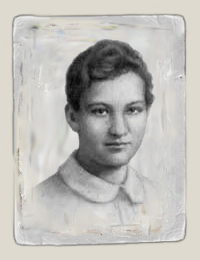 Partisan, Hero of the Soviet Union
Partisan, Hero of the Soviet Union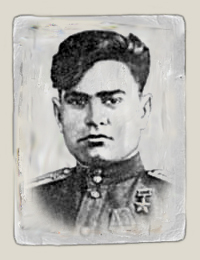 Famous Russian pilot, Hero of the Soviet Union.
Famous Russian pilot, Hero of the Soviet Union.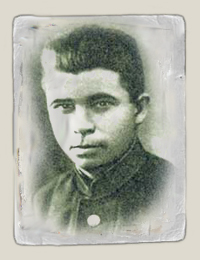 Soviet Officer and, during World War II, the captain of the S-13 submarine, Hero of the Soviet Union
Soviet Officer and, during World War II, the captain of the S-13 submarine, Hero of the Soviet Union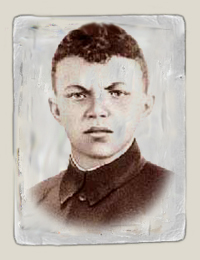 Sub-machine-gunner, Hero of the Soviet Union
Sub-machine-gunner, Hero of the Soviet Union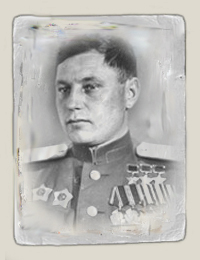 Thrice Hero of the Soviet Union, fighter pilot. He was born on March, 6th 1913 in Novosibirsk in a Worker’s family. Since 1942 he was a Member of Communist Party of the USSR.
Thrice Hero of the Soviet Union, fighter pilot. He was born on March, 6th 1913 in Novosibirsk in a Worker’s family. Since 1942 he was a Member of Communist Party of the USSR.